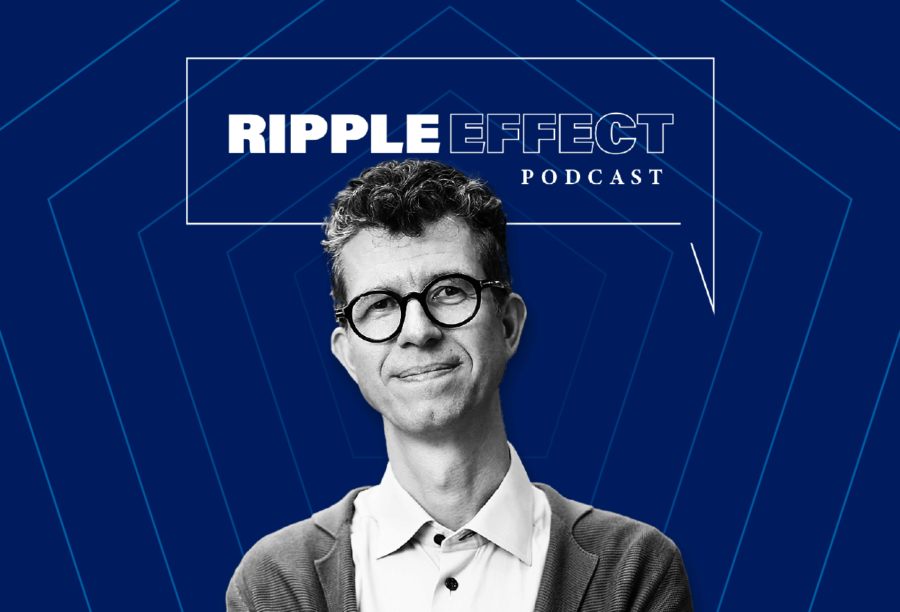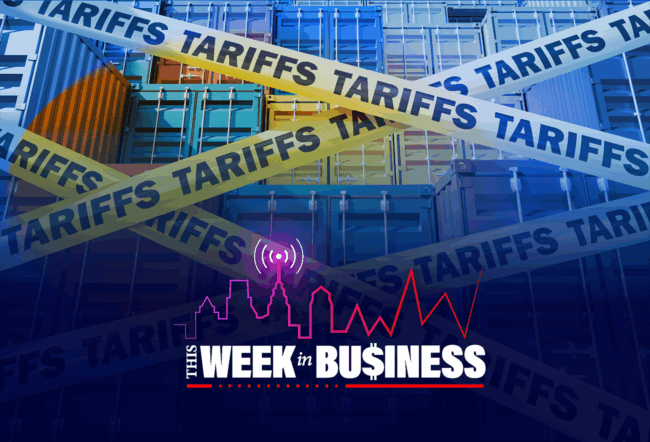Rather than mining data for insights, companies need to think more strategically about the decisions they need to make, and use data to help them get there. Wharton’s Stefano Puntoni says that’s the focus of Decision-driven Analytics, his new book co-authored with Bart De Langhe. This episode is part of the “Meet the Authors” series.
Transcript
Why Data Analytics Should Be Decision-driven
Dan Loney: We’re talking with Stefano Puntoni about his book, Decision-driven Analytics. Stefano’s book is about leveraging human intelligence to unlock the power of data. It offers a new approach about making good decisions with data. Stefano, let’s start with explaining your definition of decision-driven analytics.
Stefano Puntoni: The book is motivated by the problems that we see in many companies, where analytics are complex, companies have invested heavily, we have lots of data, and yet companies sometimes seem to struggle to extract value from that data. What we argue in the book is that the gold standard that many companies have set, which is data-driven decision making, may to some extent actually get the point wrong. We argue perhaps it shouldn’t be the decision making that is data-driven. Instead, we argue it should be the data analytics that is decision-driven.
Rather than focusing on the data, and then trying to figure out how do we extract value to improve our decision-making, it might be much better, in fact, in many situations to do the opposite. Let’s start from the decisions that we need to make and figure out what data we need to make those decisions.
Loney: What kind of potential impact have we had because maybe the process hasn’t been exactly the way it should be, and we’re maybe not extracting the value that we should?
Puntoni: Nobody argues that using data to make decisions is a bad idea. We need data to make good decisions. What we argue in the book is that the emphasis is wrong. And that the complexity and investments required to get the data systems in place, and all that complex, technical work that has to be done has attracted a lot of attention. At some point, people end up in a situation where we are looking at data and trying to find a purpose for it, rather than looking at the questions that they need to answer and find data for that purpose.
Loney: Are there common mistakes as you’ve investigated this?
Puntoni: The mistakes that we see companies do are a variety of types. But the two that are very common are that companies sometimes end up answering the wrong questions, because they haven’t connected the analytics to the decisions that they need to make very well. Because of that, they explore stuff that is actually not the stuff they should be exploring.
The second is that by focusing so much on the data, you almost end up putting this data on a pedestal and glorifying them to the extent where you might actually become uncritical of them, and not understanding the pitfalls you might run into if you make decisions based on this data. The basic issue is that of a disconnect between decision-making and data analytics, where there is large gulf or gap between the people, the leaders who make the decisions, and the systems that are meant to support them.
Loney: It’s important to ask these questions right now, because it feels like we have more data than ever. I would assume the decision-makers are inundated and maybe don’t know how to parse through it and make the right call.
Puntoni: Yeah, it’s like a strange irony in that for a long time companies were complaining they don’t have data to make decisions. They’re still complaining about data, but now they complain they have too much data, meaning there’s so many things that one could look at, and it’s easy to get lost. Of course, we still have many situations where we don’t have good data, and companies still are struggling to figure out ways in which they can achieve evidence-based decision-making in those situations.
I think we need to keep looking for great data. But in many situations, we do have lots and lots of data. The problem is that sometimes those data are not the data you need, or maybe those data are not being thought of the right way in terms of supporting the decisions that are important to make.
Why Human Judgment Is Critical
Loney: But I guess there is an importance that we need to reinstall the human component of this entire process?
Puntoni: The human judgment is crucial. What I argue always is that as computers and algorithms become smarter and smarter, and the data becomes better and better, we should think harder, not less. In a way, the key message of the book almost is to say that the secret to making good decisions with data is that before you even start looking at the data, you need to do a lot of thinking. So, it takes a lot of thinking without data to make good decisions with data.
Loney: Artificial intelligence is playing a bigger and bigger role in a lot of things that we do. How does AI impact the decision process?
Puntoni: AI is the biggest thing happening today. I’m very excited about all the work that the Wharton School is doing in the area of AI. In fact, our Dean, Erika James announced a major new initiative called the Wharton Initiative for AI and Analytics. We’re really pushing hard on what we know and what we can do to support business decision-making.
AI has both a risk and an enormous upside potential. The risk is that as we use more and more complex algorithms and technology, that gap that I mentioned earlier between decision-making and the analyst is only going to grow even larger. Because now the decision-makers have even a looser grasp of what these techniques can do and what they are about. And the people who are technical become so technical, they now lack a link to the business and maybe domain expertise that can help them be good partners for the leaders who are making decisions. That’s the risk part.
But the upside potential is enormous. I think we are going to benefit in a million different ways from AI to improve our decision-making by automating decisions in a much smarter way, by providing tools that can help support human expert’s decisions, and by making sure that the scarce expertise of our human professionals is used for the cases where that expertise can really move the needle, and leave the rest to AI.
Loney: Is the goal still the same from the company’s perspective? They’re looking for the best outcome they can get, but going about it in a much more advanced way.
Puntoni: For sure. AI is not going to tell you what you want, and what you should want. AI is going to just help you get there. We still need the leadership, we still need human expertise and creativity, imagination to think about what the future might look like.
Loney: Does that take us into the discussion about what AI is going to mean for companies moving forward? There’s a lot of discussion about AI replacing humans. But it seems like more people are coming around to the fact that AI will be complementary to humans.
The Question of Human Replacement
Puntoni: It will be both. But I think that a lot of the conversations around AI have this tone of human replacement, and human or AI. Can we develop AI systems that emulate human capabilities? The assumption of doing that is to say, well, once we have the AI system that can do what the human does, maybe we don’t need a human anymore.
I argue that business schools can play an important role to complement that perspective with a different one, which is what kinds of AI systems do we need to complement and augment human experience and human expertise? Instead of thinking about human or AI, can we think about human and AI? For example, I’m teaching a course at Wharton called “AI In Our Lives.” The whole point is exactly to do that and think about what can I do, and how do we benefit from that? What is it that humans do incredibly well, and how do we design an AI system to support that?
Loney: I would imagine that when you look at the decision process, you’re talking about things that can impact top to bottom, up and down the corporate ladder?
Puntoni: Yeah, of course. In different functions, in different levels in the organization. One point that we make in the book is that every decision-maker needs to consider what decisions are mine to make, and not worry about those that are not yours to make. Of course, you can lobby, you can try to influence and bring issues to the table for those who make those decisions. But you should primarily focus on the decision you need to make and then find out how technology and data can help you making those decisions.
Loney: One of the other areas you talk about in the book are the decisions that end up having an impact either in costs or benefits, or the investments that a company may make.
Puntoni: Right, and that stems from the vision of the leadership. What it is that we’re trying to pursue? I think AI is one of those technologies, and analytics more broadly, that enables companies to think in different ways about the benefits they can reap. Some of it might be efficiency. It could be mostly a matter of making things smoother, better, reducing risks, and reducing costs, and managing things that way.
But there is also a different way of thinking of it. Perhaps not just say, how do we do what we do better? But to think bigger and think about what is it that we are not currently doing that we could be doing? And that, I think, is the real potential of data and AI.
Loney: For people who read the book, what do you hope is the message that’s delivered to them?
Puntoni: We end with this message, and I think it is really the key thing. Ultimately, data and analytics attract a lot of our attention. They are sexy, shiny objects, and they are interesting problems. They also can be scary and complicated. So, it’s not surprising that so much attention is dedicated to them. But we should never forget that data and algorithms are a means to an end. What matters in the end are the decisions that we make.



